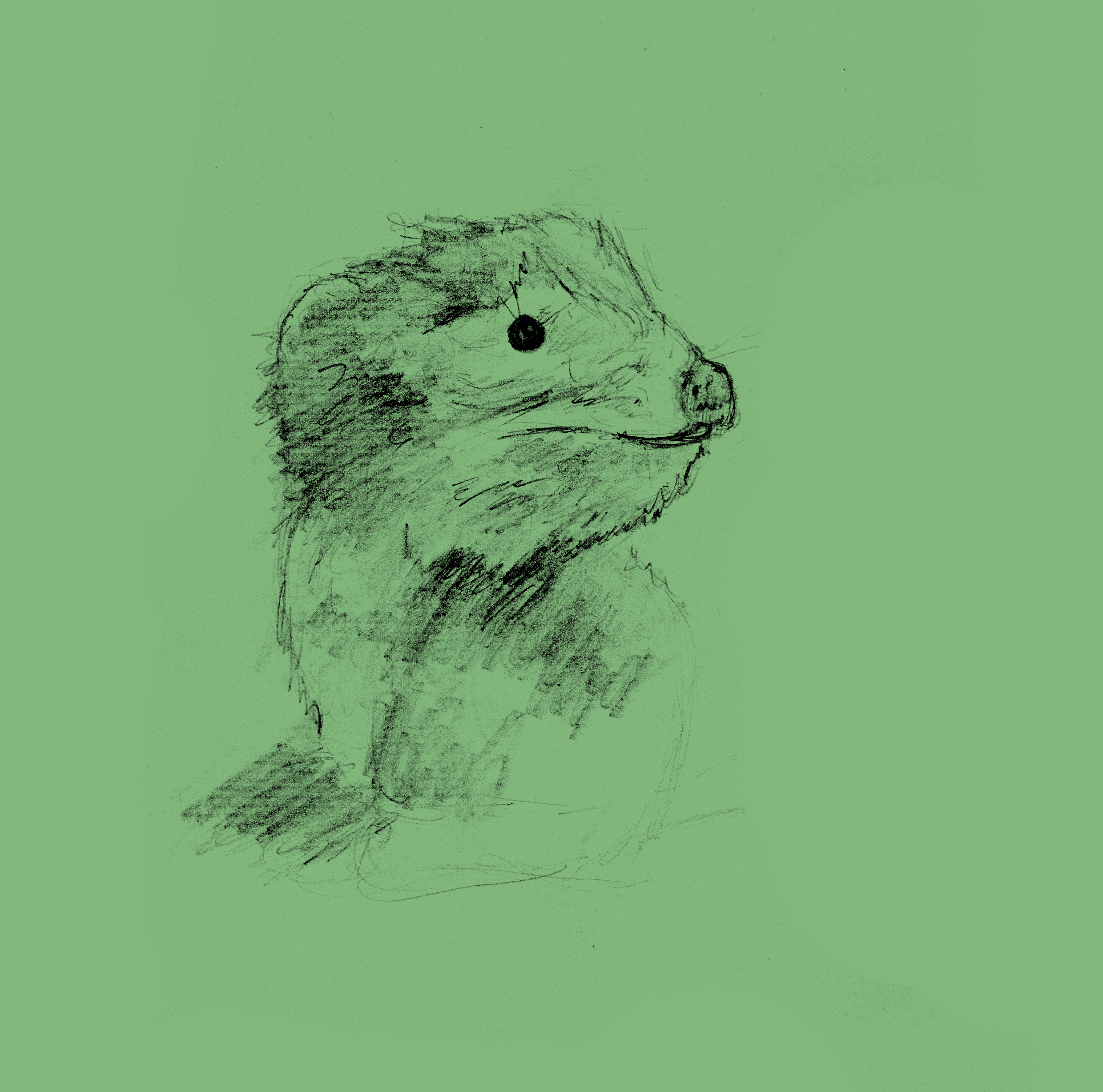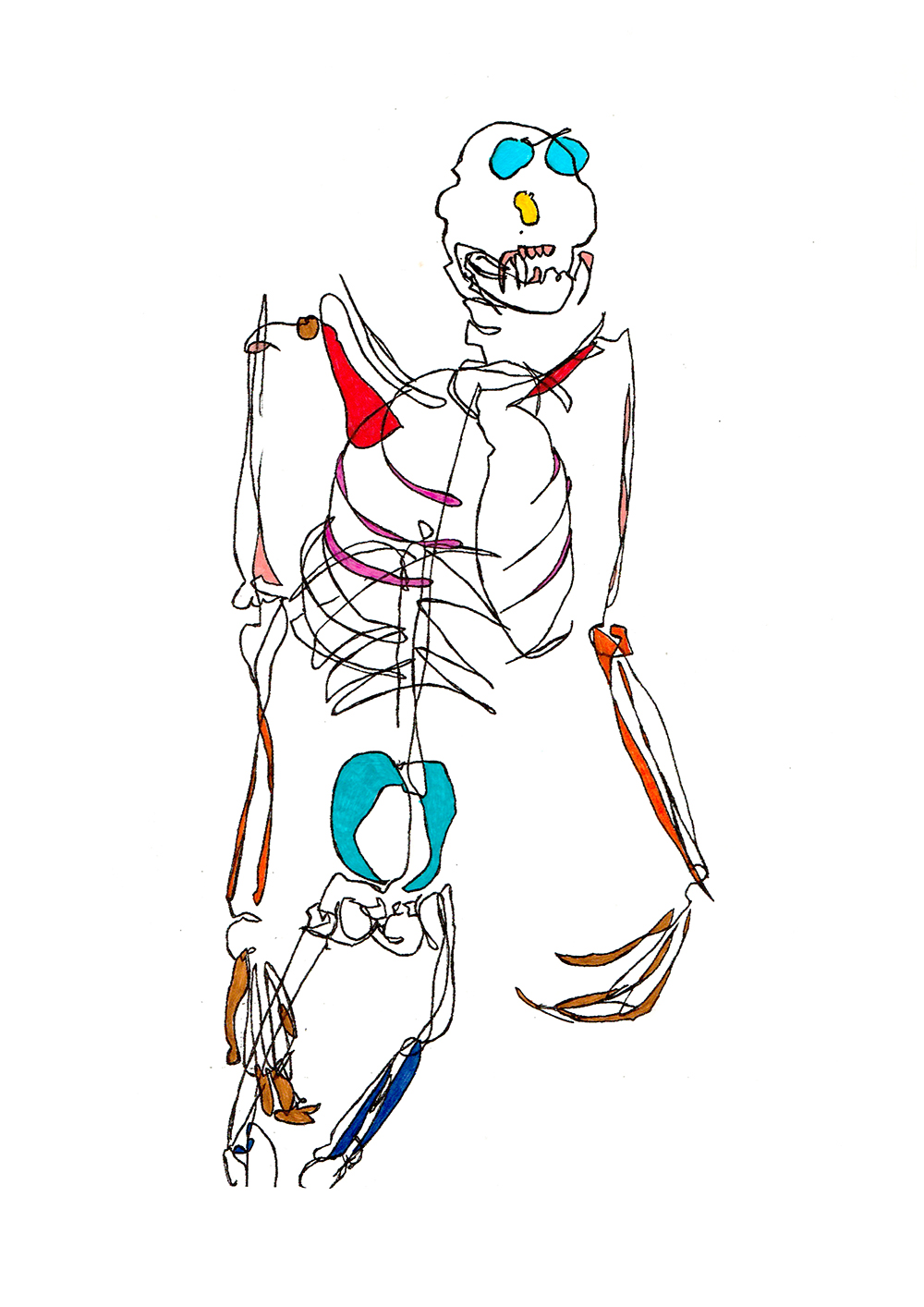[Art Schooled] Learning how to borrow ideas

During my first semester at art school I've been trying to perfect the delicate balancing act of taking inspiration from other artists...while remaining confident that I'm not copying.
Copy-cat culture is a common problem within the creative industries. It seems like every other day I see a story on social media about an artist having their work plagiarised. These horror stories raise awareness about the problem and give creatives a louder, collective voice when trying to deal with specific incidences. However, that said, they can also make you overly cautious not to even reference an element of someone else’s idea.
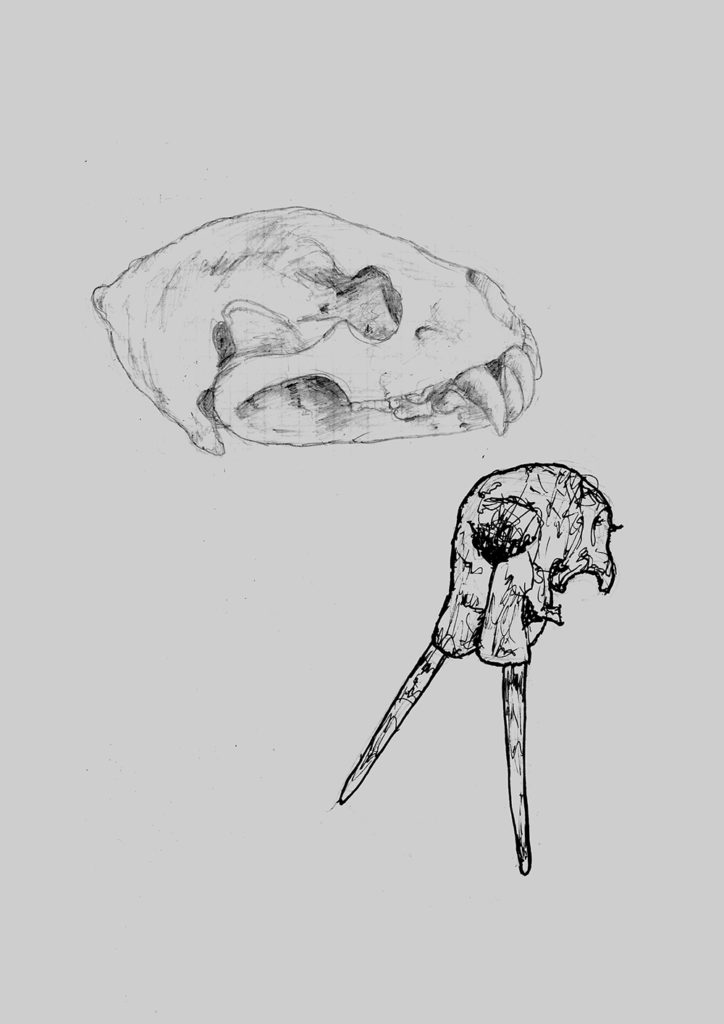
One of many analytical drawings created at the Zoology Museum
At my previous college (where I studied Graphic Design a few years ago), in my opinion, they went too far the other way. On several occasions I listened to tutors saying that there was “no such thing as an original idea”. They made a point of explaining that no matter how experimental you are, you won’t be the first person to try a technique. Whilst I accept that logically that may be true, it still feels like a negative way to teach design. It was almost as though we were being told that we couldn’t come up with our own unique ideas, so may as well steal someone else’s!
I know that maybe it’s impossible to conjure up a concept that is 100% original, but surely it’s more creatively motivational to strive for originality.

A blind drawing of one of the many skeletons in the Zoology Museum
On my current course, the mindset is a little different. Tutors encourage us to strike the balance between original thought and “idea borrowing”. (I use the phrase “idea borrowing” as we have been assured there is no such thing as stealing an idea as long as you put your own creative spin on it.)
I had to put this preaching into practise with our first project. The first part of the brief was simple enough. The project was all about D’Arcy Thompson, a renowned scientist, famous for writing a book none of us had heard of (and I can’t now remember!). To kickstart the project, we were taken to D’Arcy’s Zoology Museum for a day of drawing dead things.
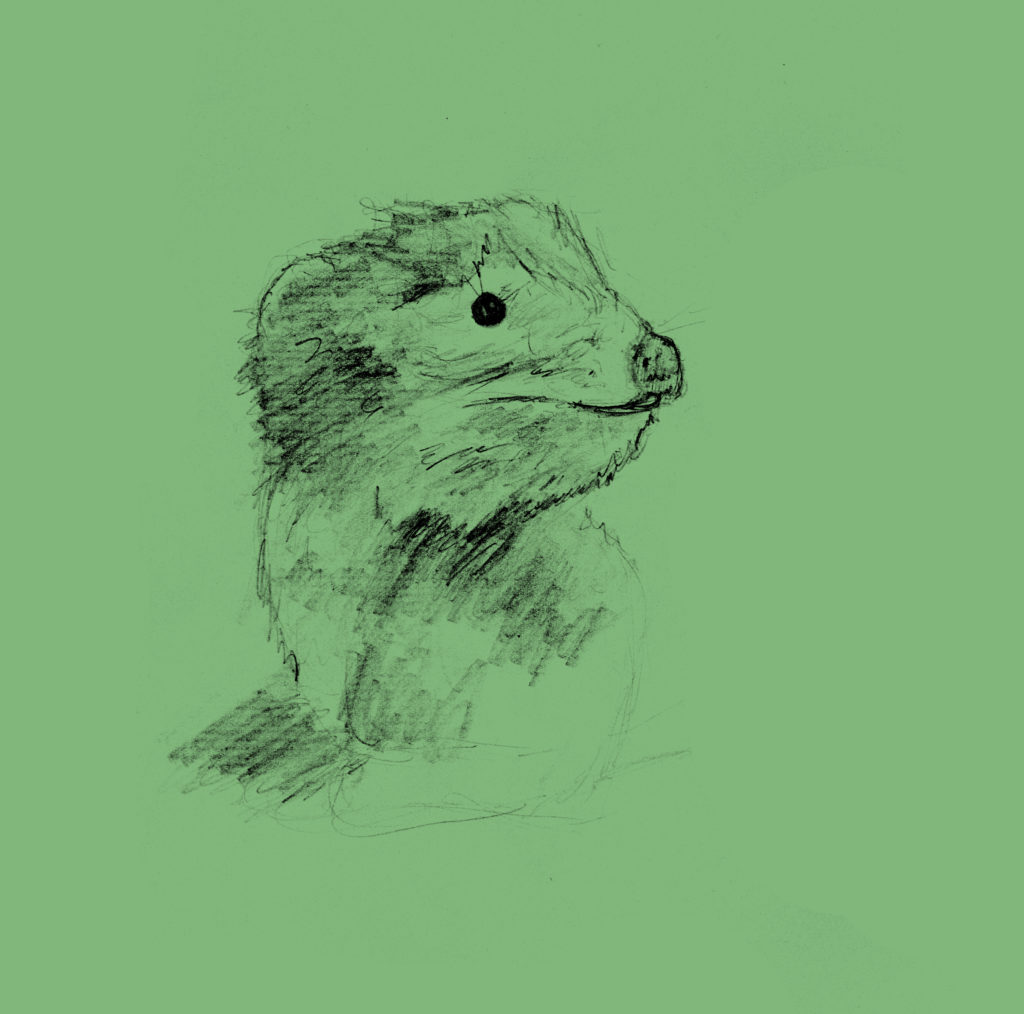
One of the many dead things I drew during our day at the Zoology Museum
Even pickled eggs gross me out a bit so I wasn’t great being surrounded by pickled animals at first. However, I got over it and got to work. I tried to see the experience as the same as life drawing classes; trying to see the subject as an object. Besides, if I could sit in a room drawing naked people without laughing then I could certainly draw a pickled squirrel without gagging.
Once we’d got used to being vastly outnumbered by dead animals, and the faint odour of death in the air, the whole class began producing hundreds of drawings in a variety of different styles.

One of the drawing I created at D’Arcy Thompson’s Zoology Museum
The second part of the brief was less straight forward. We had to take the drawings and photographs collected at the Zoology Museum and get creative. Properly creative. The brief was all about dreaming up new ways of drawings. We had to make drawings and lots of them!
We were encouraged not only to use as many materials as we could, but to learn a little about D’Arcy’s theories and think about how they could inspire fresh ways of drawing. Through a series of lectures and our own reading, we were introduced to lots of different (simplified) scientific theories. The one that stood out for me was the idea that if gravity were doubled then animals would have tiny legs and large bodies. Inspired by this odd idea, a series of adorable (if a little unsettling) drawings of little-legged horses, giraffes and zebras soon emerged.
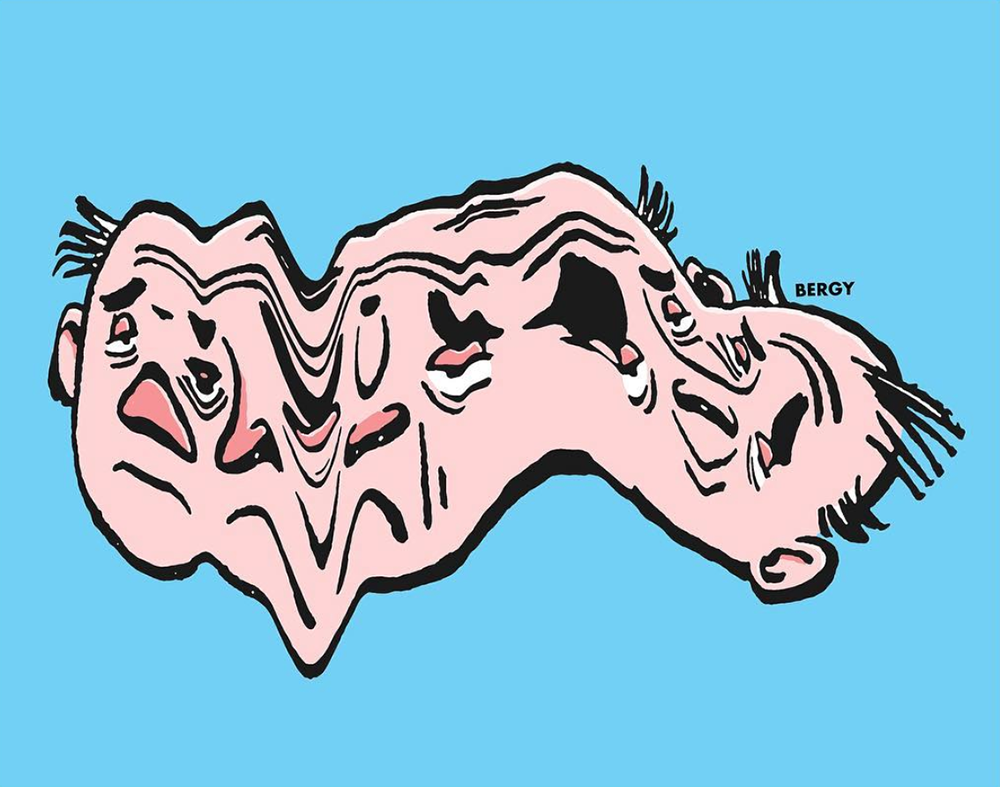
Illustration by Kevin Bergquist
At the same time, I was writing up my weekly columns for Inkygoodness, including a feature on the work of Kevin Bergquist. Xerox art (manipulating an image by moving it as you scan it) is a key part of Kevin’s process. Xerox art also felt like a good fit for the project, giving a sense of motion and unpredictability, which seemed to fit with the idea of a double-gravity universe. So I borrowed the idea.
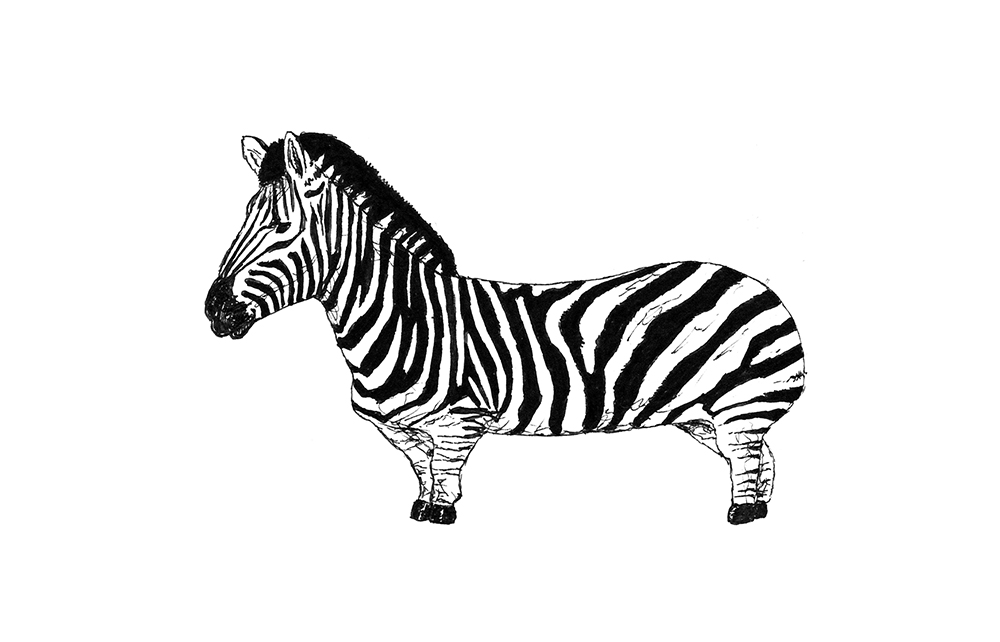
My little-legged zebra drawing before scanning
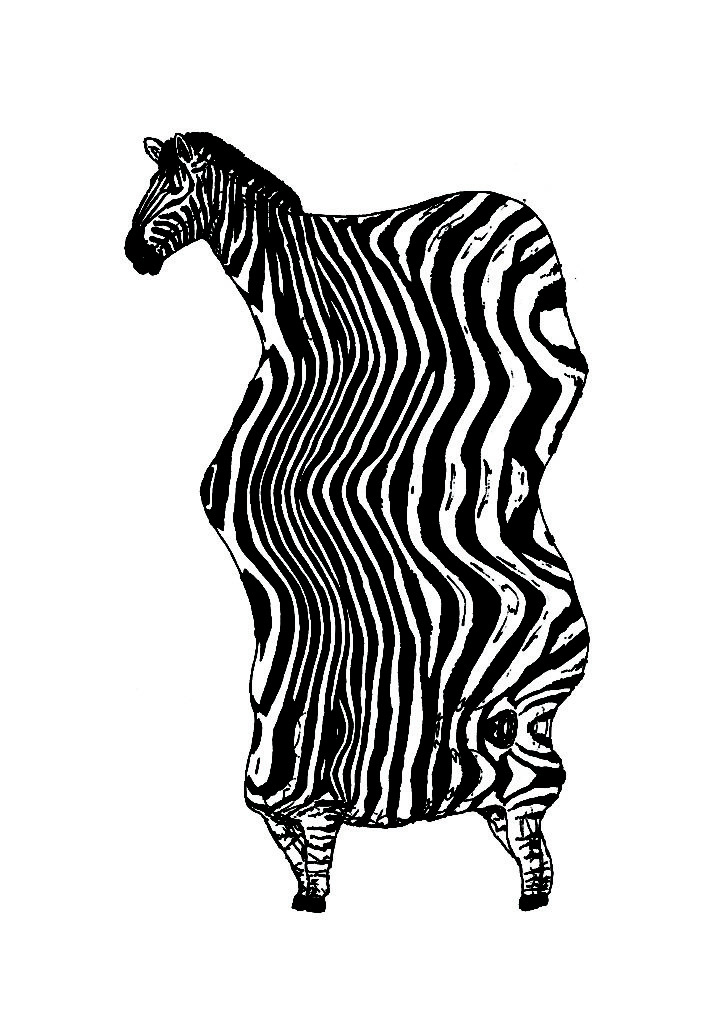
My little-legged zebra drawing after scanning
I’m aware that Kevin didn’t come up with the idea of Xerox art. And I wasn’t drawing the same subject or in the same style as he does. But still, it felt a bit like stealing, perhaps because the technique is so central to his art. It felt like I was stealing his “thing”. That was his niche, not mine. But how are you supposed to find your “thing” without borrowing and experimenting with other people’s?
If I hadn’t seen Kevin’s work I wouldn’t have expected anyone to come over and congratulate me on inventing a new technique. Yet after I did, the tiny paranoid part of my brain expected fellow class mates to somehow make the connection, brand me as unoriginal, and oust me from the university!

Artwork by Greg McIndoe
The important thing when “borrowing” is to get the right balance. It’s easy to get carried away and copy without even noticing. As long as you can look at your final design and comfortably take ownership of at least half of the idea then that will do. Even if I say Xerox art belongs to Kevin, the stumpy horse is all mine.
That said it’s important to recognise where your inspiration comes from. I read somewhere recently that the difference between stealing and inspiration is naming your source. I’d like to take this opportunity to publicly thank Kevin for the wonky inspiration. And, if there are any other artists reading this who like the idea of Xerox art then go for it! I have no idea who invented it but it certainly was not me.

Artwork by Greg McIndoe
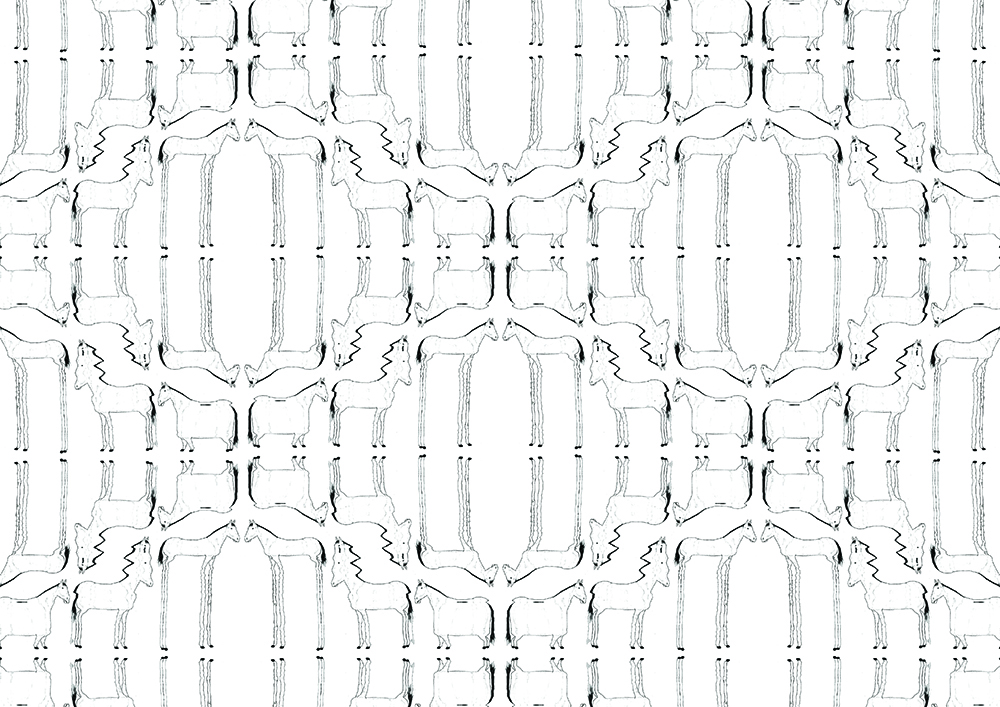
Pattern design by Greg McIndoe
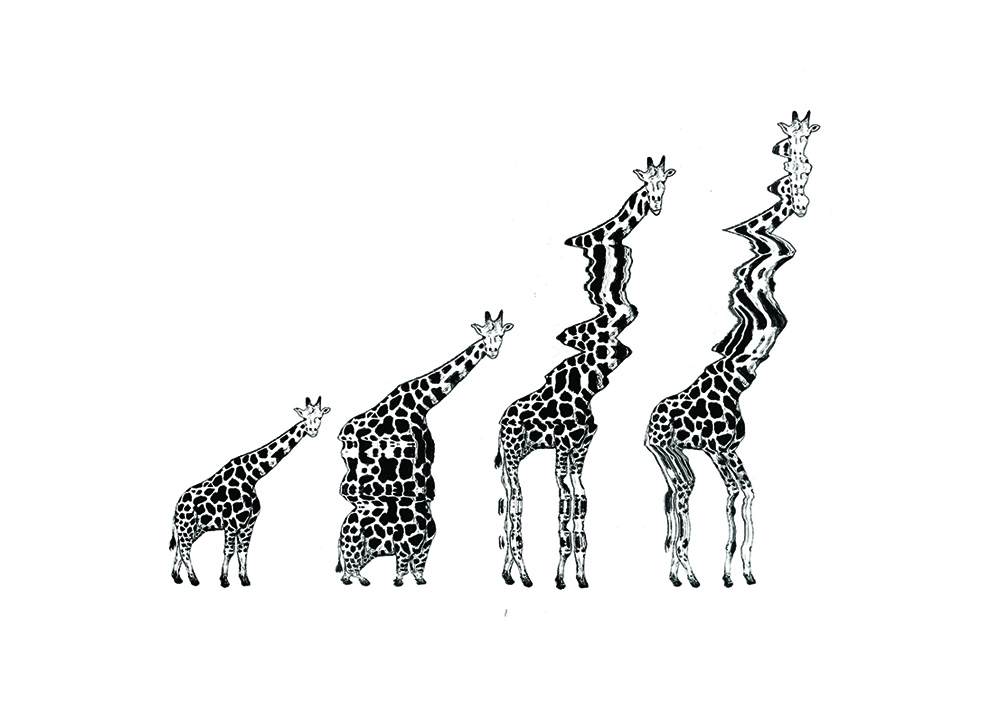
Illustration by Greg McIndoe




